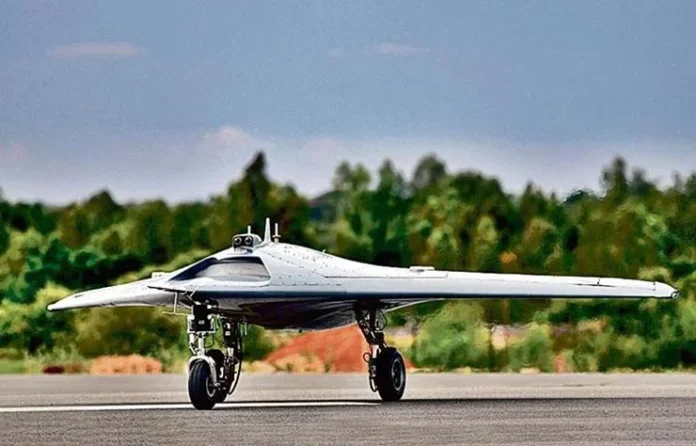New Delhi: Taking a significant leap towards advancing its aerial capabilities, India recently conducted a pivotal flight trial of its indigenous high-speed flying wing UAV, termed the Autonomous Flying Wing Technology Demonstrator. With this, India joins the elite club of countries to have mastered the controls for flying wing technology in tailless configuration.
The successful flight trial of the Autonomous Flying Wing Technology Demonstrator at the Aeronautical Test Range, Chitradurga in Karnataka demonstrated maturity in the technology readiness levels in the country and marks a notable milestone in India’s technological prowess. The Defence Research and Development Organisation (DRDO) spearheaded this achievement through its Aeronautical Development Establishment (ADE) in Bengaluru.
The journey to this feat commenced in July 2022 with maiden flight of the aircraft, followed by series of six flight trials in various developmental configurations using two in-house manufactured prototypes. These flight-tests led to achievements in development of robust aerodynamic and control systems; integrated real-time and hardware-in-loop simulation, and state-of-the-art Ground Control Station. The team had optimised the avionic systems, integration and flight operations towards the successful seventh flight in final configuration.
The aircraft prototype, with a complex arrowhead wing platform, is designed and manufactured with light-weight carbon prepreg composite material developed indigenously. Notably, the aircraft’s design, featuring a complex arrowhead wing platform signifies a pivotal moment in India’s self-reliance in aerospace technology. Also, the composite structure, which has fibre interrogators for health monitoring, is a showcase of ‘Aatmanirbharta’ in aerospace technology.
The autonomous landing of the high-speed UAV was one of the most striking capabilities demonstrated. This achievement, accomplished without the need for ground radars/infrastructure/pilot, showcased a unique capability demonstration, allowing take-off and landing from any runway with surveyed coordinates. This was possible using onboard sensor data fusion with indigenous satellite-based augmentation using GPS Aided GEO Augmented Navigation (GAGAN) receivers to improve the accuracy and integrity of GPS navigation.
Complimenting DRDO, Armed Forces and the Industry for the successful flight trial of the system, Defence Minister Rajnath Singh stated that the successful development of such critical technologies indigenously will further strengthen the Armed Forces. Secretary Department of Defence R&D and Chairman DRDO Dr Samir V Kamat also congratulated the DRDO and the teams associated with this successful flight trial.
Setting the stage for further advancements in unmanned aerial vehicles, this accomplishment propelling India toward the development of more sophisticated and technologically advanced systems.




